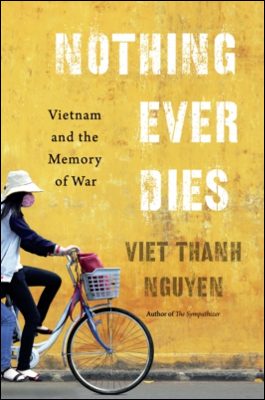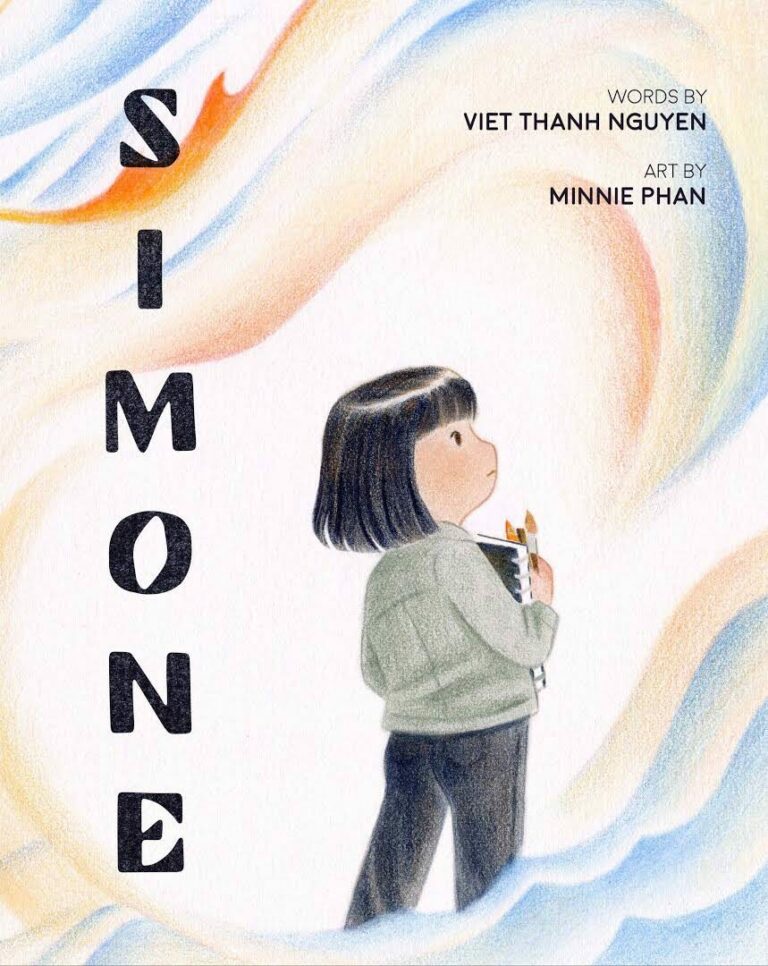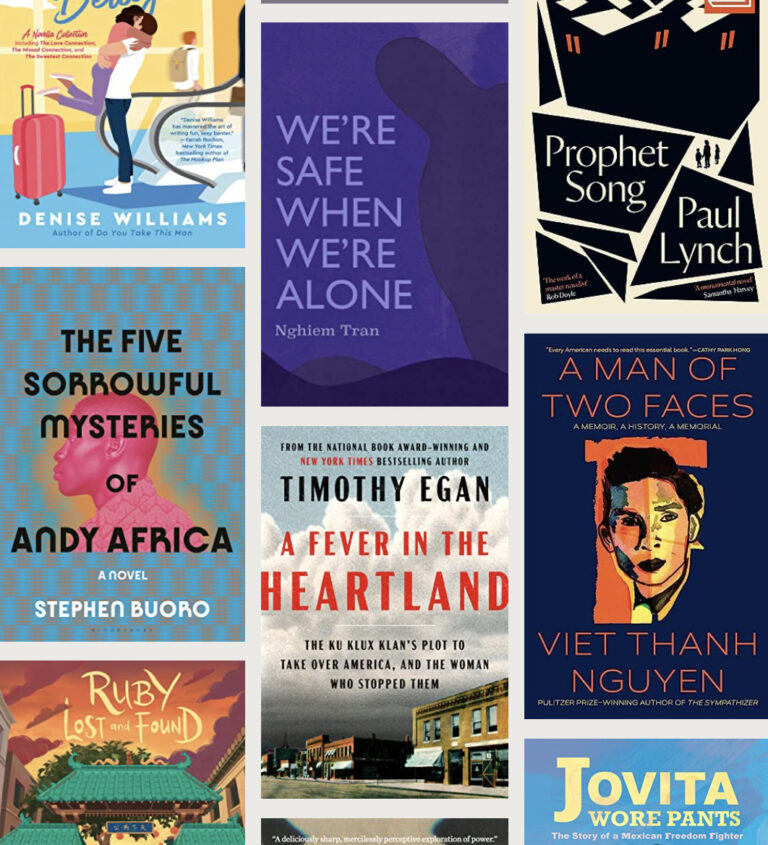David Kieran review Viet Thanh Nguyen’s Nothing Ever Dies: Vietnam and the Memory of War. Originally published by H-Amstdy.

A New Politics of Memory
The Second Indochina War–what most Americans consider the Vietnam War, a view not shared by the residents of Southeast Asia–ended more than forty years ago. In the ensuing decades, a plethora of cultural production that includes memoirs and fiction, documentary and feature film, museum exhibits and memorials, and almost every other form of expression has sought to define what that excruciating war meant for the United States, for Vietnam, and for the world. And since at least the 1980s, the analysis of how the war has been remembered and why that remembrance matters has become a significant subfield in American studies scholarship. That historiography is familiar to anyone who has spent even minimal time studying the war’s legacies. It might begin with the work of literary scholars like John Hellman and Milton Bates. It would surely include Susan Jeffords’s trenchant analyses of post-Vietnam film and Marita Sturken’s, Kristin Ann Hass’s, and Patrick Hagopian’s considerations of memorialization. It would consider the work of scholars like Edwin A. Martini and Michael Allen who have examined postwar US policy toward Vietnam. And some of the most exciting work on the legacy of the US war in Vietnam has been the explicitly transnational analyses of the sort that Scott Laderman and Christina Schwenkel have written.
Given this immense body of scholarship, it is tempting to think that there isn’t much left to say about the legacies of the United States’ long war in Indochina. However, as Viet Thanh Nguyen aptly illustrates in Nothing Ever Dies, that would be a dangerous assumption. In this masterful book, Nguyen charts a new path through well-trodden territory, offering an analysis of the war’s legacies in Vietnam, the United States, and beyond that is truly transnational, deeply theoretical, and philosophically illuminating–all while remaining thoroughly accessible. Part historical analysis, part philosophical treatise, and part personal reflection and richly illustrated, with many photographs taken by the author, it is a work full of new insights that frequently engenders deep reflection. It is an indispensable contribution to the scholarship on the war’s legacy.
Throughout Nothing Ever Dies, Nguyen is deeply concerned with what he terms the “war machine,” the discursive cultural phenomena that make war an inherent component of US culture, “a dull hum of white noise that blends in with the air conditioning, the computers, the hum of traffic” (p. 104). As Nguyen explains, “in war machines, the bristling armaments are on display, but more important are the ideas, ideologies, fantasies, and words that justify war, the sacrifices of our side, and the death of others” (p. 106). The war machine’s endurance in US culture, then, relies upon the remembrance of the war in Vietnam as one in which American suffering was paramount and Vietnamese suffering is largely elided.
If this argument is familiar from earlier scholarship on the war’s legacy, Nguyen usefully expands it in two ways. First, he points out that the disproportionate cultural capital of US memories of the war has allowed them to become global, often obscuring and marginalizing other remembrances in Vietnam, Cambodia, and Laos. And yet, at the same time, he locates the sites of both complicity and resistance to that narrative in Southeast Asian and Southeast Asian American cultural production. Moreover, he notes that the Vietnamese government is equally invested in constructing and propagating remembrances of the war that vilify Americans and justify the Vietnamese states’ postwar policies. In writing about American tourists’ tendency to reject the narratives that they encounter in spaces like the War Remnants Museum in Ho Chi Minh City, however, he explains that “these Americans are wrong in denying the truths found in propaganda, specifically that American soldiers committed atrocities in Vietnam and that the rest of America never fully grappled with complicity in them” (p. 114).
Observations like this one reveal the real genius of Nothing Ever Dies. These visitors’ attitudes examplify what Nguyen terms “unjust memory,” which “limit[s] empathy and compassion to those just like us” and “terminate[s] empathy and compassion for others” (p. 267). Much of Nothing Ever Dies is a critique of such memories and a meditation on the difficulty of producing a “just memory” of the US war in Vietnam that “celebrates the humanity of all sides and acknowledges the inhumanity of all sides, including our own” (p. 267). If war machines run on memory, that is, Nguyen usefully illustrates that different kinds of remembrance do different kinds of cultural work. Throughout, he illustrates how the various transnational dimensions of the war’s remembrance serve diverse political imperatives, none of which fully account for the war’s violence and all of which perpetuate the war machine.
Particularly valuable is Nguyen’s excavation of the wide-ranging human costs of the war not only in Vietnam but also in Cambodia and Laos, and of how those experiences have been memorialized. Most important is his call to recognize the war in all of its complexity. If he condemns US remembrances that ignore the wartime contributions of the United States’ Southeast Asian allies, he also insists that a just remembrance is one that acknowledges that others who are too easily imagined as victims in antiwar critiques also have agency and are not always wholly innocent of violence and atrocity. Also illuminating is his trenchant critique of how the Republic of Korea’s transformation into a global power finds its roots in that country’s involvement in the Second Indochina War and its remembrance of that involvement. As well, Nguyen meditates on the role of Vietnamese American writers and artists, arguing that they are compelled to meet two imperatives: first, “to serve as proof that regardless of what brought these others to America, they or their children have become accepted, even if grudgingly, by Americans” (pp. 198-199), a narrative that itself contributes to the maintenance of unjust memory, and second, to produce art that testifies about the war, a demand that limits the range of acceptable cultural production by these artists.
Nguyen’s discussion of these issues is marked by thorough research and deep compassion, and he writes in the service of a larger philosophical project and cultural goal. For all of its strengths, however, this ambitious book is not perfect. Nguyen’s discussion of the complicated cultural location of the minority writer, for example, would benefit from a bit more comparative context. That is, I had hoped for more discussion of the extent to which the issues that he discusses are unique to Vietnamese American writers specifically or whether they are also the concerns of writers from other communities impacted by US violence, for example in Central America or in Native American communities. A more significant issue has to do with Nguyen’s theorizing of memory and forgetting. These are useful, important categories of analysis, and as I have indicated I appreciate deeply how he has broadened them through the rubric of justice. However, I find some of his claims about forgetting problematic. When he writes, for example, that Vietnamese refugees “tend to forget, particularly in public commemoration, the venality of the southern Vietnamese regime, the violence committed by their own soldiers–who happen to be their fathers, brothers, and sons–and how their sentiments may be viewed from elsewhere,” I remain unconvinced that “forgetting” is a the proper term (p. 280). It seems, rather, an example of the calculated silence about which Jay Winter has written, one that is “chosen in order to suspend or truncate open conflict over the meaning and/or justification of violence.”[1] Nguyen should not be expected to have read everything, but his use of Winter elsewhere and his thorough research throughout render this a puzzling absence, and following Winter’s injunction to consider how the social dimensions of silence also function in discourses of remembrance would, I think, have added an additional layer of complexity to his analysis.
These are not, in the end, substantial criticisms. Viet Thanh Nguyen has written a thoughtful, comprehensive, and important book. If its theoretical dimensions and vast sweep might make it less than ideal in all but the most advanced undergraduate classes, it should be required reading for graduate-level courses on the Vietnam War and its legacy and courses on public memory more generally. Beyond the classroom, Nguyen’s call for an empathic, inclusive politics of memory makes Nothing Ever Dies essential for all of us who seek a world in which the War Machine will be disabled. Ultimately, Nothing Ever Dies is an argument for a new politics of memory, one rooted in “cosmopolitanism’s call for an unbounded empathy that extends to all, including others” (p. 272). To do otherwise, he suggests, means that the wounds of old conflicts will persist and that the violence of earlier wars will be repeated in new ones.
Note
[1]. Jay Winter, “Thinking About Silence,” in Shadows of War: A Social History of Silence in Twentieth-Century America, ed. Efrat Ben-Ze’ev, Ruth Genio, and Jay Winter (Cambridge: Cambridge University Press, 2010), 5.
Printable Version: http://www.h-net.org/reviews/showpdf.php?id=47428
Citation: David Kieran. Review of Nguyen, Viet Thanh, Nothing Ever Dies: Vietnam and the Memory of War. H-Amstdy, H-Net Reviews. April, 2017.
URL: http://www.h-net.org/reviews/showrev.php?id=47428
This work is licensed under a Creative Commons Attribution-Noncommercial-No Derivative Works 3.0 United States License.


